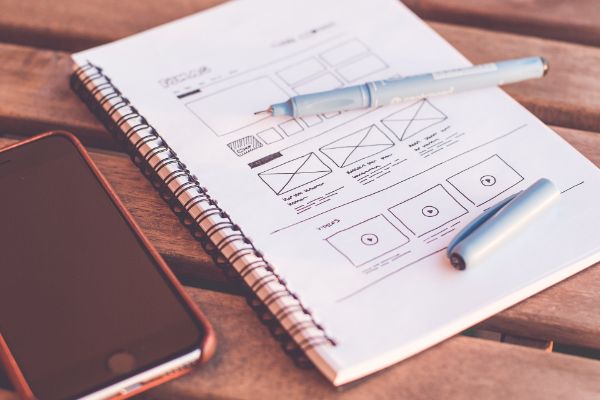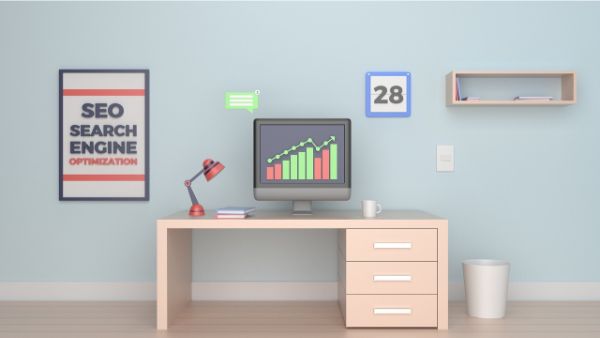Line25 is reader supported. At no cost to you a commission from sponsors may be earned when a purchase is made via links on the site. Learn more
Web designers are bliss to the world as they help everyone expand and enhance their business online. They are the architectures of our business, who construct each brick of our online website with their creativity and personal thoughts.
However, in case you want to be one of them, you need to practice and follow the 14 steps below to succeed as a web designer.
1) PREPARE YOUR PORTFOLIO:
A portfolio is a designer’s identity. It is essential to have a portfolio of your own, which helps you to showcase your skills in front of the clients. It is advisable to take out the first six months of your web designer career to work on your portfolio and strengthen it. Once it is well built, you would not have to look back every time someone asks you for your work. You can even create sample websites along with creating a separate website of your work, which works as your portfolio. It is like an internship that you do with yourself, post six months of your web design course. Take it in such a spirit and work on enthusiastically towards your goal.
2) GET CURIOUS:
A designer is known to be born as the most curious species on the earth. It may sound lame, but it is one of the most essential intangible features required by the designer. If you are already curious enough in your field and pursuing the same, then the curiosity level would be high, but in case, you are just looking for how life should be after becoming a successful web designer, then we advise you to start practicing the techniques of improving your curiosity in order to achieve your dream. Start considering your own self a toddler again, who is always curious to know about things and believes he knows nothing. The day you start becoming a learner, you will start questioning every reality prevailing in front of your eyes, and that is a place where you will start getting all the answers to your questions. Start reading and exploring different cultures, history and how something is made the way it is made, etc. This will give you space to develop a new perspective on your already existing ideas.
3) DEVELOP OBSERVATION SKILLS:
In daily life, we observe strange occurrences, different sounds, and unusual events taking place around us. In the same way, as a designer, it is vital to have keen observation skills to develop a meaningful and realistic design. The more you observe, the better you would be able to design, as all your ideas and design inspiration would lie in and around you, in your everyday life. Your observation skills would give you an edge as an artist, as you would be able to figure out unusuality in designs in the first stage, which most of your peers would not be able to. If practiced regularly, it will help you develop the eye of an artist in a short period of time.
4) THINK OUT OF THE BOX:

Thinking out of the box is the only way for survival in this competitive industry. You would always need to evolve and think out of the box to make your design stand out from others. This task requires continuous research and experimentation as a part of the homework before the actual representation. It is advisable to brainstorm your thoughts before every assignment, to come up with quirky ideas. Also, you can brainstorm your ideas with your peers to bring diversification to the table.
5) GIVE CHARACTER TO YOUR DESIGNS:

The first step is easy, where you imagine the outcome and start assuming about the end product. However, this first step is essential as it would give you a rough idea about your direction and where to end up and stop. The next step would be to develop a frame and give character to your work. The trick here is to add a tinge of simplicity in the boat of creativity by minimalizing the colors and setting the right typography with proportionate font size. The character of the design should be such that it can be re-done and remade, as one would require a lot of changes and adjustments in the designs in the later stage. It should be characterized in such a way that it does not hamper the user experience.
6) PEER-PEER COMMUNICATION:
Once you start to know about your interest in the web designing field, your very first step should be to talk to your seniors or others in the same field to understand the demand and supply of the services in the market. You can’t enter the area all blank and expect a successful career out of it in the first go. It is an excellent habit to network with your peers and experts in your field, which would help you develop a perspective every time you discuss something new. It would also help you understand the next person’s viewpoint, which would serve as a boon to you while dealing with the client.
7) START UNDERSTANDING THE PERSPECTIVE:
This skill would come in once you master the art of listening. It is vital to attentively listen while dealing with the client in order to understand the requirements thoroughly. If you start listening to the needs, it will automatically begin developing your perspective and draw a rough picture in your mind, which would help you question the same, in case of doubts. You cannot work on something you have not understood, or you have not developed a perspective on. This would also establish a one to one relationship with your client and would help you to stay aligned on the same page.
8) LEARN TO JOT DOWN YOUR IDEAS:

We all get tons of ideas every day for something we love. We always want to innovate and discover something new to achieve our goals along with that marginal utility of 1. However, when we start to work on that, we are not always able to present it correctly. This happens to everyone irrespective of the fields they are working in. This is where practicality meets theory. It is advisable to start jotting down your ideas in the form of a sketch or through simple bullet points. This will help you enhance your scope, every time you add something extra to it. We are used to pen and paper since we started our academic careers and not digital platforms. Try to use paper in the first place to jot down your ideas, and then proceed for the digital sketch. It would look a lot different but would also give you a rough idea as to what exactly you are looking for.
9) START EXPERIMENTING:
Experimenting with your designs not only helps you develop a new creation with new ideas but would also make you stand out from your competitors. You can experiment with typography, colors, layout schemes, icons, etc. Also, try to experiment and make a minimalistic design out of it, which is in demand as of now. For instance, if you can fit ten tabs under one navigation menu, then do not use it as bread crumbs. This will cut down on space and make it look broad and elegant.
10) PAY ATTENTION TO BASICS:

It is rightly said- ‘Get the basics right, and everything else falls into place.’ Basics are basics for a reason. The basics would be required in every design you make in the world. For instance, the RGB model used by almost all artists to produce every possible color in the world. These are basic colors, and if not used, there would be no new color. In the same way, in web designing, if the typography, layout and color schemes are not followed correctly with the measurements and proportions, then there are high chances of it failing badly. It acts as a starting point for every design once we deviate from the main idea and helps you to come back and restart again from the beginning.
11) UNDERSTAND BASIC OPTIMIZATION:

Basic optimization includes SEO (search engine optimization), SEM (search engine marketing), SMM (social media marketing). This is not a part of the designing but is required to understand thoroughly before designing a website. The reason being, this is the techniques used by your client to get into the eyes of Google. This is the reason for the existence of the website. If the website is not created keeping in mind the search engines, then it would make no sense to build a website. It is better to have no website then to have a non-performing website, as it is an extra and recurring expense to your business.
12) HAVE A PLAN B:
Designing is a field full of experimentation and assumption. Most of the time, the end product turns out to be a lot different than it was imagined at the starting stage. Also, as a designer, you would always be unsure of your designs until it performs well. Having a Plan B always helps in this scenario. This will not only help you to analyze the loopholes of the plan A but would also help you save time in case the first plan fails, as the next step is already planned up in advance. You can read about the A/B Testing technique and understand how you can check the live performance of both the designs together.
13) REGULAR FEEDBACKS:
Feedbacks are necessary. It is required at every stage of your designs as it would help you improve and present a better product in the market. It is advisable to take regular feedback on your designs from your peers and others prominent in this field, to get an idea about your mistakes. You can also receive input from a layman, and even that would turn out to be amazing as he or she would be an actual user of the product in real-time. You should consider critic feedback and positive feedback, in the same manner, to grow and design better.
14) ACCEPT THE CHANGES:
This is the very first thing the designer needs to learn. It would come with time and experience. It comes with the job of a designer as it is tough to connect to the client’s perspective and your own at the same time and mix it well. You would get ‘N’ number of changes in the first few years, which would turn out to be your strength if practiced patiently. A few required changes don’t prove you to be a weak designer or a failure. It merely means that the thoughts of the clients are not aligned with your theories, being a layman in this field. You have the upper hand in this, and if taken positively, it would work like wonders for you. Also, you would need to practice a sense of patience while dealing with the clients to establish a long term relationship. Every time the client demands changes, just put your perspective and discuss it further. This will make the ideation process more fruitful. It is advisable not to deny or show back an angry response to the client even at 101st revision. This will make you stand out from others in your industry.
Now, as you know what all you need to become a successful designer, it is time to start practicing it to achieve your goals. The points are familiar and straightforward, which you already know but the main reason behind highlighting it in front of you before you dive deep into the designing is to help you understand the importance of everyday tangible and intangible things required for becoming a dedicated and successful web designer.

Excellent set of steps to consider. There is of course more to becoming successful, but the list is a very good starting point.